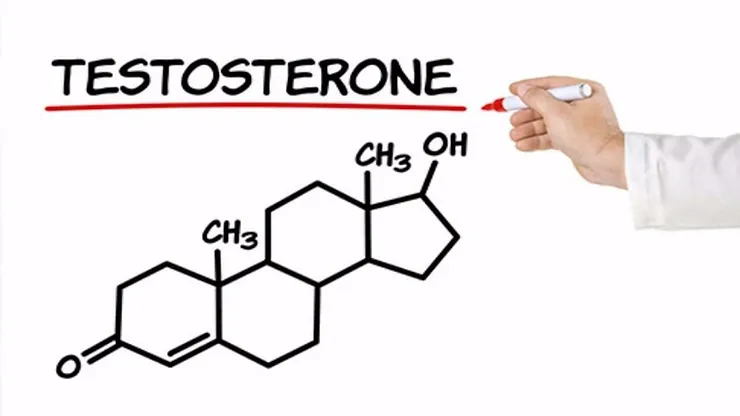
At a 2013 Annual Meeting sponsored by The Endocrine Society, many of the speakers were from the international endocrinology community. They praised testosterone replacement therapy for many unwanted symptoms and signs associated with aging-related hormone declines and published their clinical practice guidelines. Let’s consider who is a candidate for testosterone, the potential adverse effects, and important blood tests to manage replacement therapy.
Who is a candidate for testosterone therapy? According to a report in a 2014 Journal of Sexual Medicine, a synthesis of international experts emphasized the diagnostic limitations of using a serum testosterone level as the only reason for replacement therapy and revealed that symptoms of low testosterone are the foremost criteria for determining this.
What are the symptoms of low testosterone in men and also in women? Let’s look at these. In men, low testosterone is seen by the following symptoms and signs: Fatigue, overall lack of energy Difficulty with concentration and memory; brain fog Loss of motivation at work and in life, mildly depressed mood Irritability (increased anger, agitation, or loss of patience) Reduced muscle mass and strength Increased body fat, gynecomastia (enlarging breasts), decreased body hair Decreased interest in sex or drive Erectile dysfunction, delayed refractory period (the time it takes to have sex again) Hot flashes Infertility Insomnia Thinning dry skin
In women, low testosterone is seen by the following symptoms and signs: Reduced muscle strength and tone, easy fatigue with exercise Difficulty losing weight Decreased interest in sex Difficulty concentrating, mood swings, low mood, anxiety Hair loss Therefore, if one or more of these symptoms deserve improvement, you are likely a candidate for testosterone replacement.
According to the Endocrine Society, there is overwhelming evidence of the benefits of Testosterone therapy, but you must have “…unequivocally and consistently low serum T concentrations” in order to fit their criteria for replacement therapy.
Therefore, a serum-free testosterone level is the first and main blood test to have performed. If your level is close to or below the normal lab reference range, then there will be little question of benefit from testosterone replacement therapy.
However, if your testosterone level is in the middle to the high end of the range, consider ways to increase testosterone uptake into your organ tissues. These methods include: Losing excessive body weight; primarily through aerobic exercise plus strength training and consuming only nutrient-rich foods.
Eliminate refined sugar from your diet Consume plenty of healthy fats (not only from avocados and nuts but also saturated fats at 50-60 percent of your diet. Examples are olive oil, coconut oil, grass-fed meats, and real butter). Take a protein powder supplement daily; from whey, rice, or pea protein. Take Vitamin D to maximize your level (and then have it tested by your doctor) Take Zinc 25 mg twice daily Reduce stress.
Lab tests needed There are certain blood tests you’ll need since there are interactions between testosterone and other sex steroid hormones in the body. These include LH (luteinizing hormone): which tells us if your testosterone is low due to insufficient signaling hormones from the brain, or insufficient production in the gonadal or adrenal organs SHBG (sex hormone binding globulin) Estradiol: which can build up due to excessive activity of the aromatase enzyme. If too high, it can be suppressed using the aromatase-inhibitor Arimidex (anastrozole). This will boost testosterone. DHEA-S: this can be supplemented if it is low DHT (the metabolite of testosterone responsible for acne, hirsutism, and hair loss)
Also, there can be other unwanted side effects in men and women who supplement with testosterone. The following blood tests are needed periodically: CBC: complete blood cell analysis. High red blood cell counts (polycythemia) increase blood clotting risk PSA: to monitor prostate activity Hemoglobin A1c to detect the presence of diabetes or metabolic syndrome.
Managing adverse effects of testosterone replacement There may be side effects to testosterone therapy. The good news is that there are ways to counteract such unwanted side effects. For example Acne: many medications help this from topical antibiotics and tretinoin to IPL (intense pulsed light) or microneedling. Breast swelling or tenderness: effect should lessen in time; pain reliever medicines can be used. Hirsutism: facial hair growth in women affects 5-8% of adult females.
If this develops with adequate testosterone replacement then consider IPL long-term hair removal Spironolactone (Aldactone) pills daily Vaniqa (eflornithine) topical cream Supplements found to help reduce hirsutism are diindolylmethane (DIM), N-acetyl cysteine (NAC), green tea, spearmint, licorice, reishi mushroom, saw palmetto, black cohosh and or chaste tree extract. Hair loss: Rogaine (minoxidil) is an over-the-counter scalp application daily; Propecia (finasteride) are prescription pill.
As an aside, if you read the January 2014 PLOS article which proposed that testosterone replacement in men after having a myocardial infarction increases their risk for a repeat event, the international experts referenced earlier found this not to be credible.
To long-term health and feeling good, Michael Cutler, M.D.








